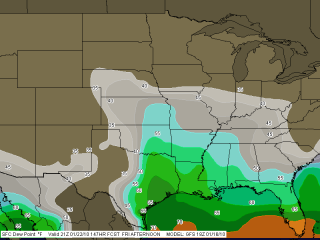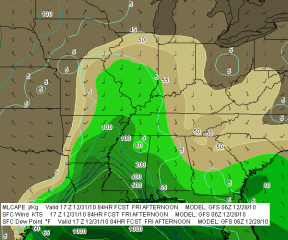As I begin this post, around 5:20 p.m. EST, the KGRR metar shows a temperature of 35 degrees here in Grand Rapids, Michigan. Not far to the southwest, though, closing in on Chicago, northeast Illinois is giving reads of around 20 degrees. The backside of the low pressure system that has brought us a
wintry mix is preparing to bring considerably colder temperatures down upon us, wrapping in from the northwest and west as the low lifts up into Canada.So far, conditions really haven’t been bad at all, certainly not as bad as the scenario the NWS has painted with a blizzard warning commencing at 1:00 p.m. But I’m sure the weather will worsen; it’s just a matter of time. The guys at the local WFO have the unenviable task of forewarning the public of potentially lethal winter conditions without coming up looking like goobers when the blob of Jello-O they’ve got to nail to the wall doesn’t entirely cooperate. Predicting severe warm-season weather is tough enough, but forecasting winter weather is a whole different kettle of fish entirely, and my guess is, it’s a harder one to get right.
Anyway, here’s what’s presently sitting on top of us here in Michigan. The topmost image is a 2200Z map showing current pressure and wind barbs. The bottom one is a level 2 radar grab with metars. Click on the images to enlarge them. They depict conditions at the time of the evening commute, which aren’t too bad; they also indicate what’s on the way, which isn’t too good. We are gonna get socked, methinks. But that’s okay. Lisa and I have got a couple Christmas movies to watch, good beer, plenty of food, the warmth of each others’ company, and the blessing of the Lord’s presence in our humble but comfortable apartment. Really, it doesn’t get much better than this.








